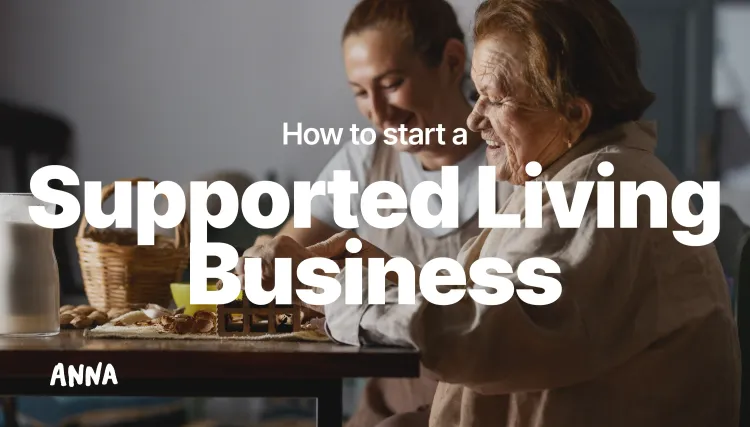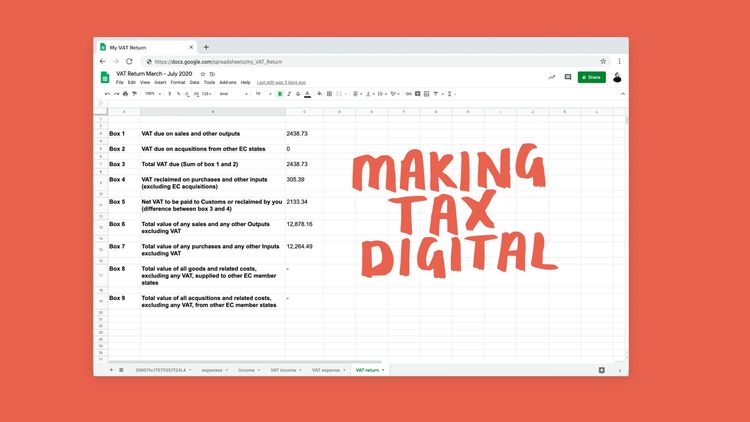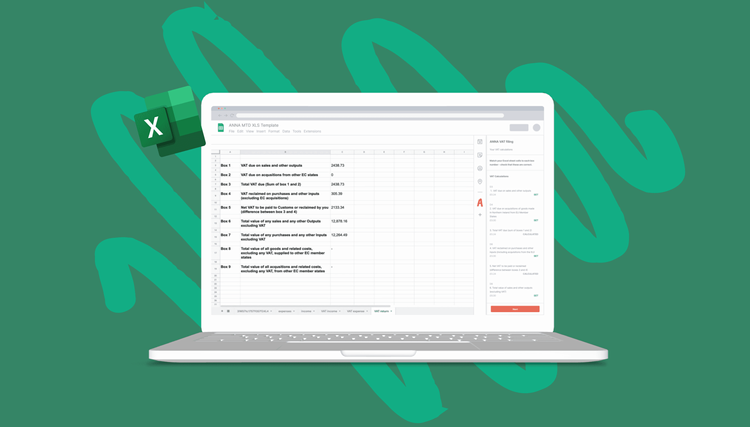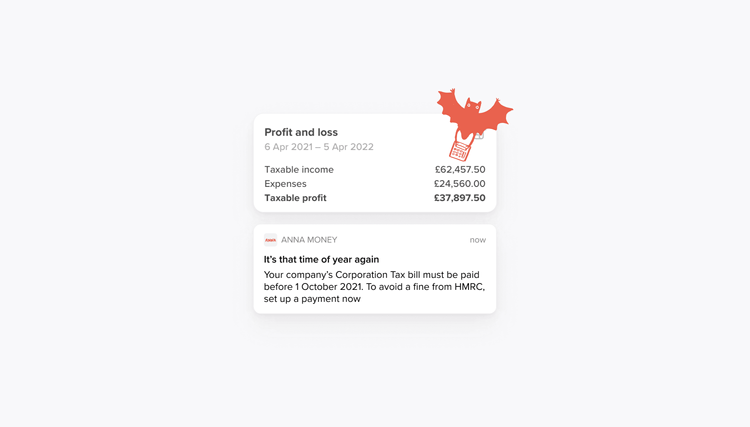There's no getting around it: value added tax is complex, but it may apply to your business in the future, so it's well worth getting to grips with now. If even seeing the term “VAT” makes you panic or has you thinking things like, I really should find out what it is before I pay it, read on for a simple breakdown.
Update: As of 2025/26, the VAT threshold is £90,000. This threshold has remained unchanged since it was increased from £85,000 in April 2024.


- In this article
- Firstly, what is VAT?
- How is VAT calculated?
- What is the 2025/26 VAT threshold in the UK?
- When do I need to register for VAT?
- What if my sales dip below the VAT threshold after I register?
- What happens if I choose to register for VAT early?
- On the plus side
- Things to watch out for
- Okay, I’m ready to get VAT registered. How do I do it?
Firstly, what is VAT?
The short answer is that it’s the UK Government’s third biggest revenue stream since 1973. The more helpful answer is Value Added Tax, a sales tax added to the price of the goods or services provided by a business.
As a business owner, you’re required by law to charge your customers VAT once your company’s turnover – not just its profit – is above the VAT threshold.
It’s known as an “indirect tax,” which means that although your business has to charge your customers VAT and then pay it to HMRC, you can later claim that tax back. Ultimately, it’s the customer who pays VAT, not your business.
Don’t forget, VAT applies to total sales, not just profit, so you may need to register sooner than you think.
How is VAT calculated?
While some items and services are outside the scope of VAT – i.e. “exempt items” – the majority will be taxed at one of the three current VAT rates:
- Standard (currently 20%)
- Reduced Rate (currently 5%)
- Zero Rate (0%, naturally)
It sounds like zero rate is the same as exempt, doesn’t it? It’s not. Here’s how they differ:
- Exempt items are goods or services that you don’t legally need to charge or pay VAT on. However, you do still need to include them on your VAT return. Examples of exempt items include land, postal services, health services, betting and gaming.
- Zero rate is a VAT charge of 0% that the Government applies to certain goods and services, which you then charge to your customers. These must also be included on your VAT return. However, unlike with exempt items, you can reclaim the VAT on any goods you had to purchase in order to provide for your customers (aka “Input VAT”). Examples of zero-rated VAT goods are children’s clothes and footwear, water, basic food items, books, and newspapers
In real life, this means different things to different businesses. Businesses like financial services are generally exempt from charging or paying VAT, whereas a similar field like consultancy is required to pay the standard 20%. Still got questions? Here’s a more detailed (and math-heavy) explanation.
What is the 2025/26 VAT threshold in the UK?
Once your business hits a turnover of £90,000 in a 12-month period, then you need to register for VAT and start charging it to your customers. Read more about VAT threshold in the UK.
When do I need to register for VAT?
They say timing is everything. When it comes to VAT, it’s vital. Here are a few scenarios that should help you decide when you need to register for VAT.
- If your turnover for the past 12 months exceeds the £90,000 threshold, you’ll need to register by the end of the following month. For example, if you hit the £90,000 threshold by the end of September 2025, you'll need to register by the end of October 2025.
- If you predict you’ll exceed the threshold within the next month, then you can get a headstart and register now. (And if that’s the case, congratulations on your success!)
- If you buy goods for your business from VAT-registered suppliers exceeding £90,000 then you’ll need to register even if you yourself sell VAT-exempt products or services.
- If either you or your business move to the UK from abroad, you’ll need to register.
- And it should go without saying that if you take over a VAT registered business, it’ll be registration time for you, too.
Hungry for more details? Visit the Government’s VAT Registration hub.
What if my sales dip below the VAT threshold after I register?
Firstly, don’t panic – business can be unpredictable. Secondly, you can ask for either an exemption or a deregistration if you can prove that the rise in sales was temporary and your turnover is set to fall back below £88,000 (the VAT threshold for deregistration). Be warned though, it can prove tricky to deregister, so don’t register unless you’re prepared for even more paperwork should your circumstances change.
What happens if I choose to register for VAT early?
Many businesses choose to register for VAT before they reach the required sales. It may seem counterintuitive to elect to pay tax before you have to, but there are pros and cons to voluntary registration
On the plus side
- If you sell zero-rated goods, but the supplies you buy are standard-rate, early registration means you can reclaim the VAT you paid. (You may be able to claim for up to 4 years of trading before registration, too.)
- If you sell standard-rate goods, and your customers are VAT registered, then they can reclaim that VAT if you’re also registered, which they’ll love you for.
- It sounds a little teacher’s pet-like, but early registration makes you look good. It gives the impression your turnover is nearing the threshold, which lends gravitas to your brand. To the business world, it shows you’re ready to grow, which in turn could lead to opportunities.
Things to watch out for
- There’s a chance you could end up with higher costs than before. If the VAT you charge is more than the VAT you pay, you have to pay HMRC the difference.
- Cashflow might be an issue if your sales and purchases fluctuate unpredictably.
- More paperwork, including a quarterly VAT return. You may have to hire a bookkeeper if you haven’t already, or upgrade your accounting software, all of which costs money.
- Your customers may end up paying more if they’re not VAT registered themselves.
- Late fees can loom if you fail to file your VAT returns on time. That won’t be a problem if you’re an ANNA customer. Alongside a bunch of other admin support like invoicing, we’ll keep you updated on all HMRC requirements so you never miss a deadline.
Okay, I’m ready to get VAT registered. How do I do it?
Really easily – just visit the Government’s VAT hub and follow the steps. Good luck!
Read the latest updates
You may also like
Open a business account in minutes




![How to Start a Currency Exchange Business in the UK [Guide]](https://storage.googleapis.com/anna-website-cms-prod/medium_Cover_3000_Landscaping_Business_Names_Creative_Name_Ideas_daad2f9e2a/medium_Cover_3000_Landscaping_Business_Names_Creative_Name_Ideas_daad2f9e2a.webp)




![140 Creative Tutoring Business Names [Ideas & Examples]](https://storage.googleapis.com/anna-website-cms-prod/medium_Cover_3000_Landscaping_Business_Names_Creative_Name_Ideas_d7964059b3/medium_Cover_3000_Landscaping_Business_Names_Creative_Name_Ideas_d7964059b3.webp)

![How to Start a Self-Employed Business in the UK [Guide]](https://storage.googleapis.com/anna-website-cms-prod/medium_Cover_3000_Landscaping_Business_Names_Creative_Name_Ideas_fe5b6edef1/medium_Cover_3000_Landscaping_Business_Names_Creative_Name_Ideas_fe5b6edef1.webp)






![Can a UK Company Register for VAT in Ireland? [Full Guide]](https://storage.googleapis.com/anna-website-cms-prod/medium_Cover_Large_d5917ee7e3/medium_Cover_Large_d5917ee7e3.webp)





![How to Check a UK VAT Number [Comprehensive Guide & Tips]](https://storage.googleapis.com/anna-website-cms-prod/medium_a_Ewt17_NJE_Fa_PX_8u_L_Cover3000_Howtochecka_UKVAT_Number_5c361cc53b/medium_a_Ewt17_NJE_Fa_PX_8u_L_Cover3000_Howtochecka_UKVAT_Number_5c361cc53b.webp)
